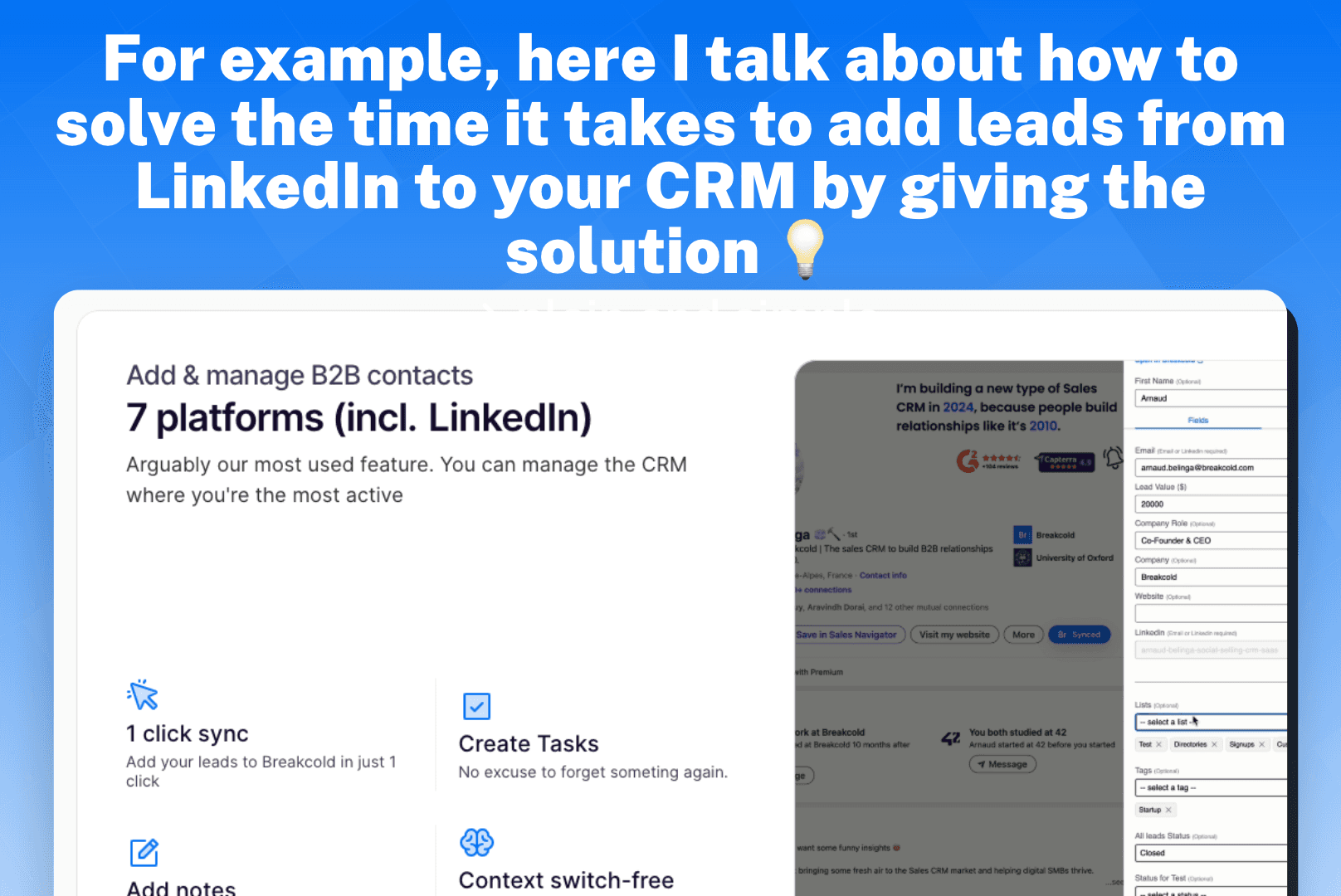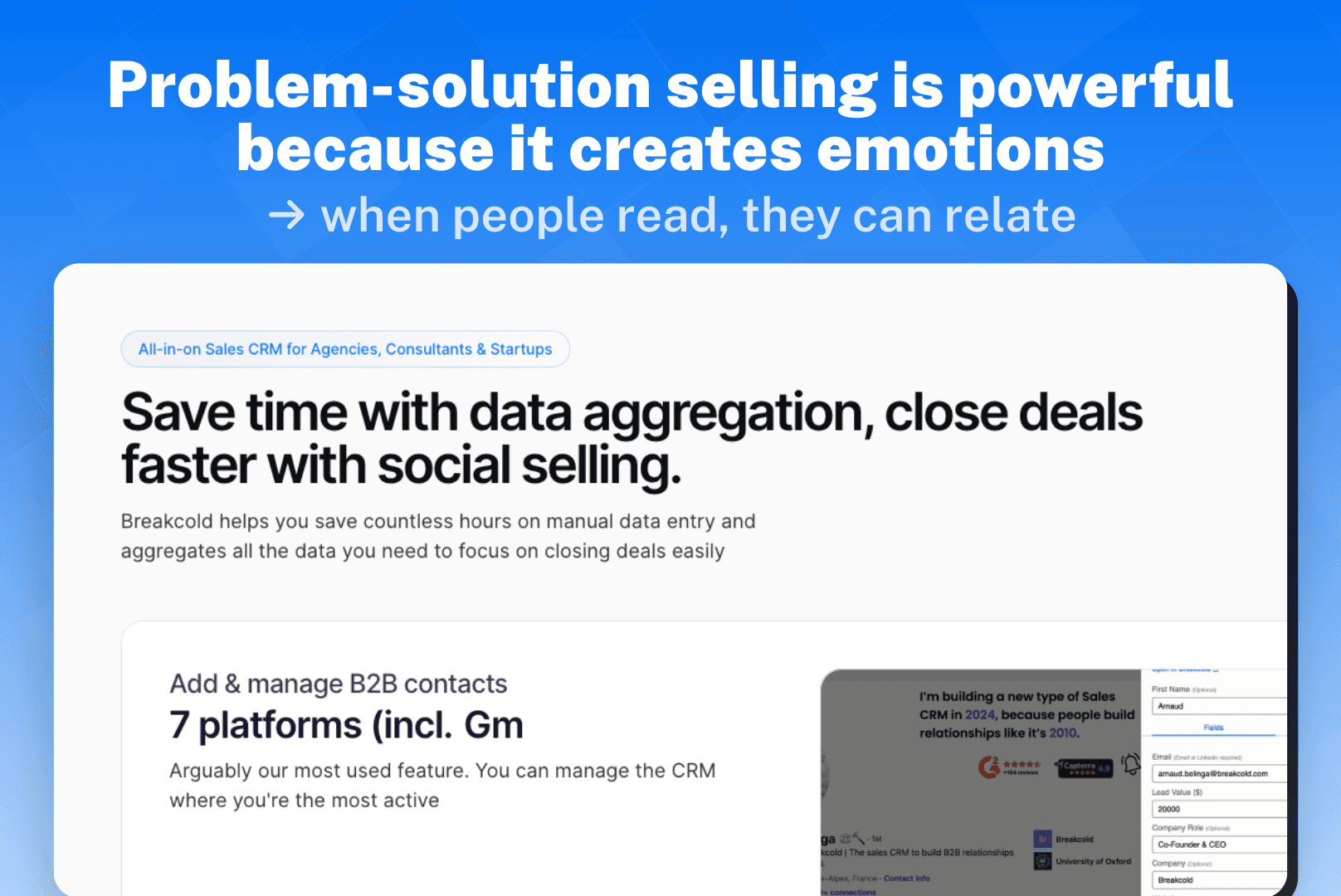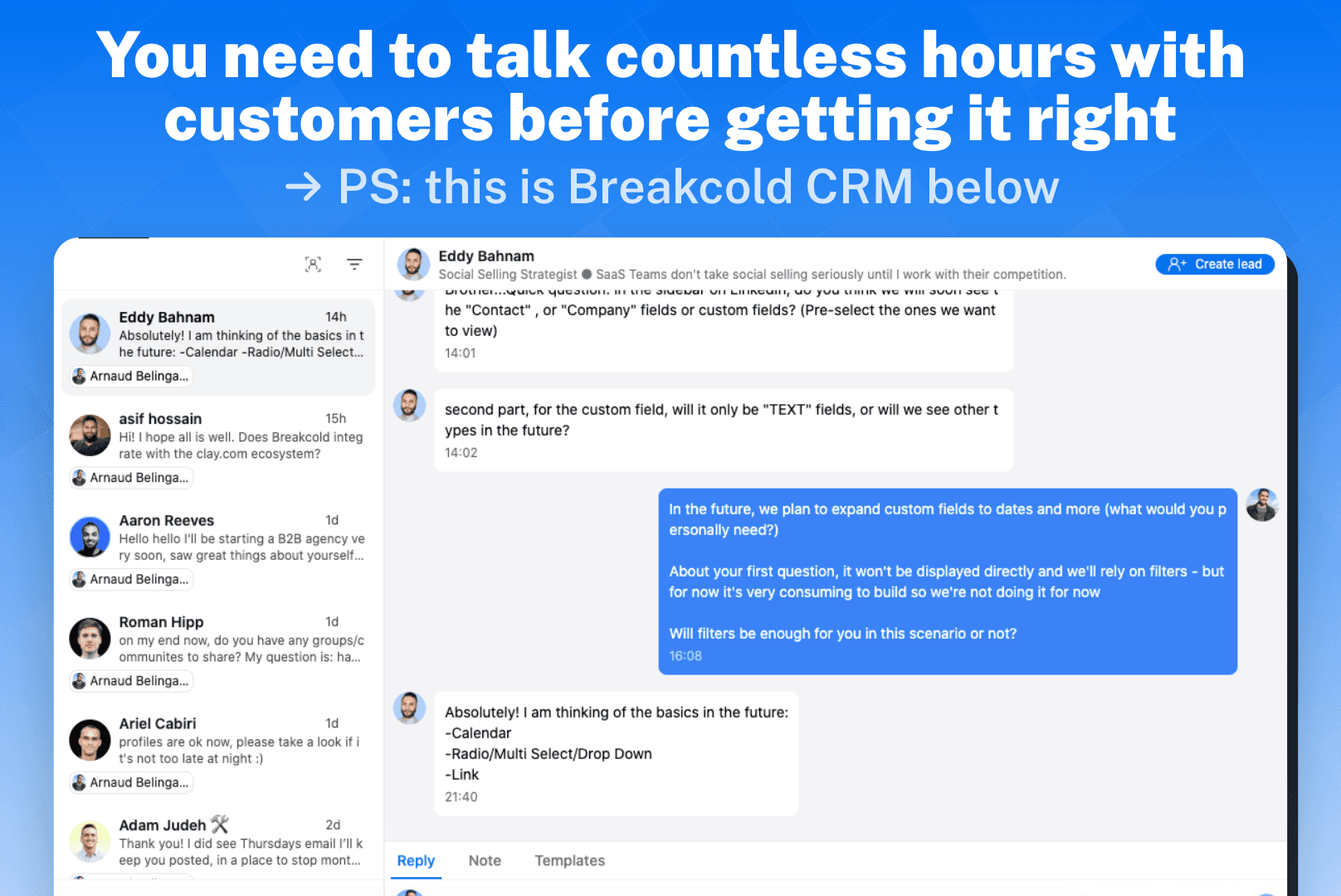
What is Problem-Solution Selling? (Explained With Examples)
Problem-solution selling is a sales technique that focuses on identifying a customer's pain points or problems and then presenting a solution that addresses those specific issues. It involves understanding the customer's needs, showcasing how your product or service can solve their problems, and ultimately closing the deal
What is Problem-Solution Selling?
In simple terms, problem-solution selling is a sales approach that aims to solve customer problems rather than just focusing on selling a product or service. It requires a deep understanding of the customer's pain points and challenges, and the ability to present a tailored solution that addresses those specific needs.

Problem-solution selling goes beyond traditional sales techniques by actively listening to customers and empathizing with their struggles. It involves a comprehensive analysis of the customer's situation and the development of a customized solution that brings value to their business.
By adopting a problem-solution selling approach, sales professionals can establish themselves as trusted advisors, guiding customers towards the right solution rather than simply pushing a product or service. This customer-centric approach builds long-term relationships based on trust and mutual success.
Definition of Problem-Solution Selling
Problem-solution selling is the process of identifying and understanding a customer's pain points, offering a solution that resolves those issues, and demonstrating how the solution brings value to the customer.

When engaging in problem-solution selling, sales professionals must conduct thorough research to gain a deep understanding of the customer's industry, challenges, and goals. This knowledge allows them to identify specific pain points and propose a solution that directly addresses those issues.
Furthermore, problem-solution selling requires effective communication skills to clearly articulate the benefits of the proposed solution. Sales professionals must be able to demonstrate how the solution aligns with the customer's objectives and delivers tangible value.
Advantages of Problem-Solution Selling

There are several advantages to using the problem-solution selling approach:
Customer-Centric Approach: Problem-solution selling focuses on the customer's needs, making it more likely to close deals with satisfied customers. By understanding their pain points and providing tailored solutions, sales professionals can build trust and establish themselves as valuable partners.
Strong Differentiation: By addressing specific pain points, problem-solution sellers can differentiate their offerings from competitors. This allows them to stand out in a crowded market and position their solution as the most effective and relevant choice.
Greater Value Proposition: Solving customer problems creates a stronger value proposition, making it easier to showcase the benefits of the product or service. By highlighting how the solution directly addresses the customer's pain points, sales professionals can demonstrate the value they bring to the table.
Long-Term Relationships: Problem-solution selling fosters long-term customer relationships based on trust and ongoing problem-solving. By consistently delivering value and addressing evolving needs, sales professionals can cultivate loyal customers who are more likely to become advocates for their brand.
These advantages highlight the effectiveness and potential for success that problem-solution selling offers. By prioritizing the customer's needs and providing tailored solutions, sales professionals can achieve higher customer satisfaction and drive business growth.
Disadvantages of Problem-Solution Selling

While problem-solution selling can be highly effective, there are some drawbacks to consider:
Complexity: Identifying and understanding customer problems can be complex and time-consuming. Sales professionals must invest significant effort in researching and analyzing the customer's pain points to develop appropriate solutions.
Requires Expertise: Problem-solution selling requires in-depth knowledge of both the customer's industry and the product or service being sold. Sales professionals must possess a deep understanding of the customer's challenges and goals, as well as the technical aspects of the solution they are offering.
Resistance: Customers may not always be open to exploring new solutions, which can create resistance during the sales process. Sales professionals must be prepared to address objections and educate customers on the benefits of the proposed solution.
Higher Skill Level: Problem-solution selling requires advanced sales skills, including active listening, empathy, and effective communication. Sales professionals must be able to ask the right questions, actively listen to the customer's concerns, and communicate the value of the solution in a compelling manner.
Despite these challenges, the benefits of problem-solution selling often outweigh the disadvantages. With the right skills, knowledge, and approach, sales professionals can effectively navigate the complexities of problem-solving selling and achieve successful outcomes for both their customers and their business.
Examples of Problem-Solution Selling
Problem-solution selling is a customer-centric sales approach that focuses on understanding and solving customer problems. By effectively identifying pain points, presenting tailored solutions, and showcasing the value proposition, problem-solution sellers can successfully close deals and build long-term relationships with satisfied customers. Let's explore some examples of problem-solution selling in different contexts.
Example in a Startup Context
Imagine a software startup that has developed a project management tool. They use problem-solution selling to identify common project management challenges faced by their target customers and position their tool as the solution. By highlighting features such as task tracking, collaboration tools, and reporting capabilities, they showcase how their product can help businesses overcome common project management obstacles.
Through effective problem-solving, they are able to attract customers who are struggling with project management inefficiencies and are seeking a solution that meets their specific needs. The startup's team of experts understands the pain points of their target customers and has developed a user-friendly tool that streamlines project management processes, saving time and increasing productivity.
Example in a Consulting Context
In the consulting industry, problem-solution selling is a common approach. Consultants identify specific challenges faced by their clients, such as operational inefficiencies or revenue growth obstacles. They then develop customized solutions tailored to the client's needs.
By showcasing their expertise and understanding of the client's pain points, consultants can effectively position themselves as problem-solvers. This approach builds trust and enables consultants to secure long-term engagements, as clients see the value in their solution. Consultants work closely with their clients, conducting thorough analyses and providing strategic recommendations to address the identified challenges. They guide their clients through the implementation process, ensuring a smooth transition and measurable results.
Example in a Digital Marketing Agency Context
A digital marketing agency may use problem-solution selling to attract clients who are struggling with generating leads and driving online sales. The agency identifies the specific pain points, such as low website traffic or ineffective PPC campaigns (e.g., due to not looking at the actual ads your competitors are running), and offers a comprehensive digital marketing strategy as the solution.
Through case studies and success stories, the agency demonstrates how their expertise can address these challenges. They showcase their track record of helping businesses increase their online visibility, improve conversion rates, and achieve their marketing goals. By presenting a clear solution to the client's marketing problems, they can effectively close deals and drive tangible results.
Example with Analogies
Analogies can be a powerful tool in problem-solution selling as they help customers understand complex concepts by relating them to familiar situations. Let's consider an example of selling cybersecurity solutions to a business.
The seller may use an analogy of a physical security system for a building, comparing firewalls to security cameras and intrusion detection systems to alarms. This analogy helps the customer grasp the importance of cybersecurity and the potential risks they face without adequate protection. By presenting the solution as a comprehensive security system for their digital assets, the seller can effectively convey the value of their product.
In conclusion, problem-solution selling is a versatile approach that can be applied in various industries and contexts. By understanding customer pain points, tailoring solutions, and effectively conveying the value proposition, problem-solution sellers can successfully address customer needs and drive business growth.











































































































































































































